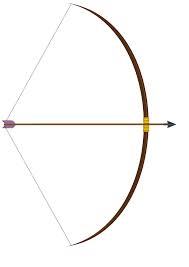Will Archer A Survive Extended...
 Three archers, A, B, and C, are standing equidistant from each other, forming an equilateral triangle. The chances that A, B, and C successfully hit a target they aim at are
,
, and
respectively.
Three archers, A, B, and C, are standing equidistant from each other, forming an equilateral triangle. The chances that A, B, and C successfully hit a target they aim at are
,
, and
respectively.
The three archers will play a survival game. The objective of the game for all players is to kill the other two archers and be the only survivor.
The order of shooting is to be chosen AT RANDOM.
Assuming that all archers will die if he is hit by an arrow aimed at him, and that all archers will make the best possible optimal moves to maximize their chances of winning (surviving), the probability that Archer A wins can be expressed as where and are co-prime positive integers.
Find the value of .
The answer is 86.
This section requires Javascript.
You are seeing this because something didn't load right. We suggest you, (a) try
refreshing the page, (b) enabling javascript if it is disabled on your browser and,
finally, (c)
loading the
non-javascript version of this page
. We're sorry about the hassle.
There are 6 possible orders of shooting ---
ABC, ACB, BAC, BCA, CAB, CBA.
1) For CBA, CAB and ACB the probability of survival for A remains 1/3 each. Optimal strategy for C is to shoot B dead. Then A has 1/3 chance of shooting C dead. For last scenario (ACB), A must deliberately miss his shot, allow C to shoot B down and have 1/3 chance of success. Detailed explanation follows...
2) For the scenarios, ABC, BCA and BAC---
The optimum strategy for weak player A is to deliberately miss his first shot. The optimum strategy for players B and C is to take a shot at each other on their turns. Since optimal strategy for A is to miss his shot, the 3 scenarios have identical probability.
Lets take player A. He deliberately misses his shot. Now B takes his shot at C.
1) Scenario 1 - B misses the shot with 1/3 chance.
C on his turn shoots B dead. A shoots at C can now survive with a 1/3 chance. Obviously if he misses he is dead. Total chance of survival = 1/3 * 1/3 = 1/9
2) Scenario 2 -- B shoots down C with 2/3 chance.
Now its between A and B. A shoots B dead with 1/3 chance on first round.
But if A misses, he still has a chance if B misses as well. So A misses with 2/3 chance, B misses with 1/3 chance, then A shoots B dead with 1/3 chance in the next turn. This can continue infinitely setting up a geometric series in the bracket
1/3 { 1 + 2/9 + (2/9)^2 + (2/9)^3......} which sums up to 1/3 *9/7 = 3/7.
This is multiplied by 2/3 so its 2/7.
Total Probability of both scenarios = 1/9 + 2/7 = 25/63.
Now to prove that C missing first shot deliberately is best strategy.
1) A takes the first shot at B.
a) In this case, if A hits B he is a goner since C will hit A with certainty.
b)Therefore, the only way A can win is if he misses but in this case, the situation is just as it was before, when A shot to miss. Since White has a 2/3 chance of missing, and from above we know that A has a 25/63 chance of winning if he misses, this shows that the probability of A winning is 2/3 * 25/63 = 50/189 in this case, or roughly 26.5%
2) A takes first shot at C.
a) If he misses the shot, The scenario is the exact same as above and he wins with a 50/189 chance.
b) If he shoots C dead (1/3), A can only win if B misses his shot (1/3), and then A wins the face-off against B (3/7). So its 1/3 * 1/3 * 3/7 = 1/21.
Therefore the total probability that A will win if he shoots at C is 50/189 + 1/21 = 59/189, which is roughly 31.2%...
Finally the combined probabilities of all 6 scenarios = 1/6 (1/3 + 1/3 + 1/3 + 25/63 + 25/63+25/63) = 23/63
23+ 63 = 86.